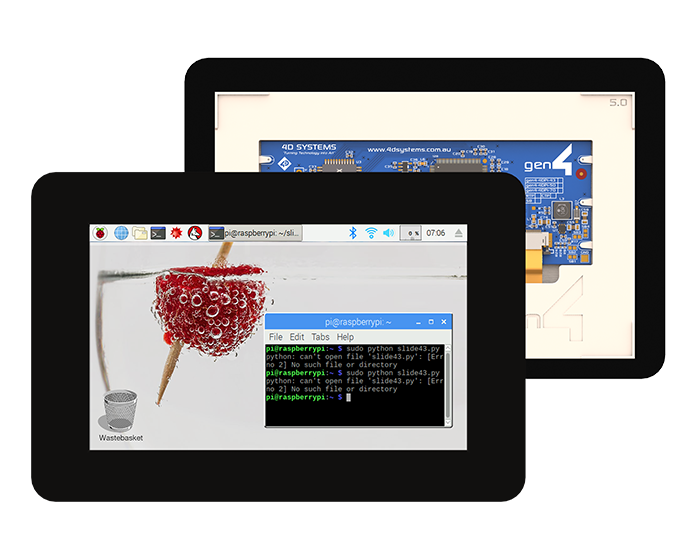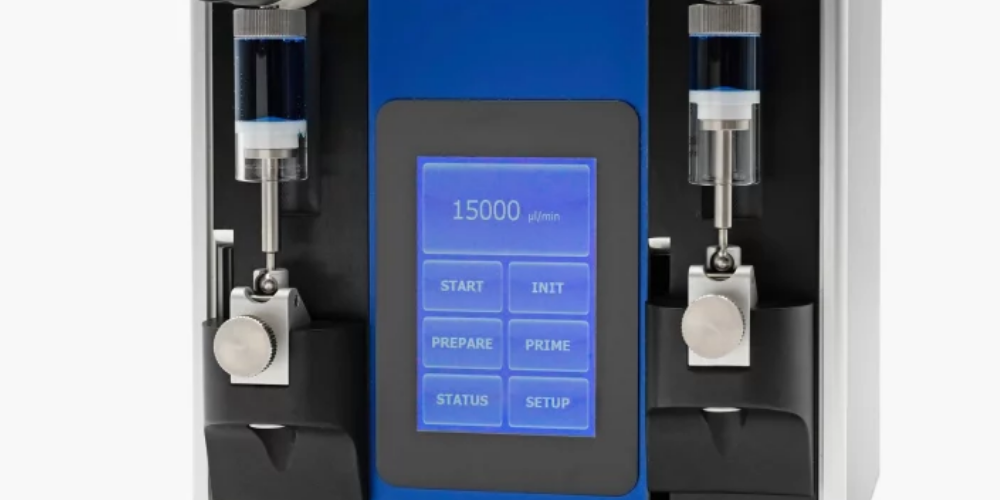
Our Educational Primer Series presents a deep dive into the technical elements that bring together the world of 4D Systems and what we have to offer. Beginning with Intelligent Display 101, you’ll find that this information series, developed with our experts and engineers, is the perfect place to power up your knowledge and take your understanding of our hardware and software to the next level. As always, feel free to reach out and get in touch. The best learning is interactive and we’d love to hear from you.
File Downloads
Intelligent display 101
Gone are those days when displays were simple tools to show you something. Whether it is the displays of your mobile, TV, tablet or other devices, they have come a long way from the static black and white days. Now you have a wide range of displays – often intelligent and facilitating a human-machine interface.

What is an intelligent display?
For the uninitiated, the term intelligent display might mean something very sophisticated and complex. However, the term represents ready-to-be-installed & EMC (electromagnetic compatibility) pre-qualified display modules that enable you to quickly and easily add graphics combined with a touchscreen human-machine interface to your devices.
Intelligent Display is often provided as an add-on to your main application and is connected to your main board via a serial connection (such as RS232, CAN2.0B, USB). It is normally steered through a set of control commands that are integrated into the main code of your device.
Why choose an intelligent display?
Touch has become a global interface for multimedia devices across the world, and there is an increased demand for larger touchscreens, especially in the corporate sector. More people are introduced to the touch interfaces, thanks to its availability on their personal devices, at the shopping centre information displays, in educational institutions and so on. These touch screen displays have become so common now that you can see them almost everywhere – in ATMs, interactive kiosks at museums and public transportation centres, advertising boards and more.
Businesses have realised that it is here to stay and are now investing in associated technology more than ever. Hence, both business and individual users expect to be offered interactive touchscreens by the supplier unprompted – intelligent display is slowly becoming the norm and not an exception. To think only a few years ago, the process of installation of interactive displays took a lot of work convincing the user about the benefits and ease of use.
One of the major advantages of intelligent displays is the ability to interact with laptops, tablets, phones and other displays. In short, the interactive collaborative technology helped to improve communication and engagement between man and the machine. As a result, not only phones but also homes and offices are turning smart. Many businesses find that intelligent displays are great tools to communicate with their customers and clients.
Advantages of intelligent displays?
Intelligent displays come with a lot of benefits. Some of them are:
With intelligent displays, it is possible to change the display to suit any user. For instance, the font/picture size can be adequately increased if the user has a problem seeing small fonts. Likewise, the volume can be increased or decreased to suit the listener so that he can enjoy the content in the best manner.
Pinch-zoom and other features such as swiping with two or more fingers to capture a screenshot, make it easier to handle the devices.
it is very easy to use an intelligent display unit – often touch or swipe will be enough to get things done. With the introduction of new technology, even voice commands can be used to activate them.
if we take the case of intelligent advertisement display boards, they can be highly customised. For instance, if a board is displaying ads of clothes, it can be programmed in a way that if someone passes by it, it displays ads specifically targeted to the person.
Likewise, the boards are highly customisable to suit the needs of the user. For instance, a display board in a school can be enlarged to use in a large seminar hall or used as a display unit on usual school days.
Needless to say, the greatest advantage of an intelligent display is its interactive feature. The end-user is, in fact, able to communicate with the machine and get the information needed easily. Interactive kiosks in an art gallery or a museum are great examples of this. With the help of these display units, a visitor can even see the minute details of the exhibit.
| intelligent displays often come with a high-performance capacitive touch panel that operates under a 5mm tempered glass. It means that the screen is durable and it will continue to work even if it is cracked. |
As technology grows, it will be possible to do more tasks by a mere touch on your screen. In the coming future, even a gesture of your hand or fingers without actually touching the screen could activate the screen. It is likely that more devices will offer touch facility – laptops and desktops are now offering the feature and it has made life easier than ever. So, it would be safe to presume that Intelligent Display is here to stay and grow further.
To see the extensive range of screens from 4D Systems, visit: www.4dsystems.com.au/products/
Table of contents
Subscribe to our newsletter
Latest Case Studies

This case study unveils a practical application of embedded innovation, highlighting the process and outcomes of upgrading legacy systems in a technology-focused product line. Through strategic technological integration, the project not only uplifted product performance but also markedly improved customer satisfaction levels. The subsequent pages delve into various strategic and operational enhancements made, providing readers with a nuanced understanding of the concrete impacts and subtleties involved in a real-world, engineer-led embedded innovation initiative. A testament to blending traditional systems with modern innovation.

Duratec, specializing in liquid handling devices for various industries, aimed to simplify the control interfaces of their new product line. Partnering with 4D Systems, they integrated a touch display module enhancing user-centricity and operational efficiency. This transition replaced outdated control panels with an intuitive, modern interface without compromising on control capabilities via the RS232 interface. Three new devices were launched, improving user interactions through user-friendly touch displays, showcasing Duratec's commitment to innovation. This collaboration allowed for more straightforward control, monitoring, and interaction with Duratec's devices, ensuring a better user experience and meeting industry demands.

In the challenging process of creating an advanced 3D printer, BCN3D encountered an unexpected difficulty: finding an appropriate, user-friendly display module. Despite initial struggles, BCN3D discovered the solution in 4D Systems’ gen4 display modules. These modules offered superior resolution, processing power, and flexibility. Key to BCN3D's decision was the modules' easy integration via a serial connection and the Arduino-compatible library into their firmware. For its Sigma R17 3D printer, BCN3D upgraded to the gen4-ULCD-35DCT-CLB, a 3.5-inch Intelligent TFT-LCD display module with capacitive touch, further enhancing the user experience. The gen4 series of intelligent display modules perfectly matched BCN3D's requirements, offering innovative solutions in the sophisticated 3D printing space.

